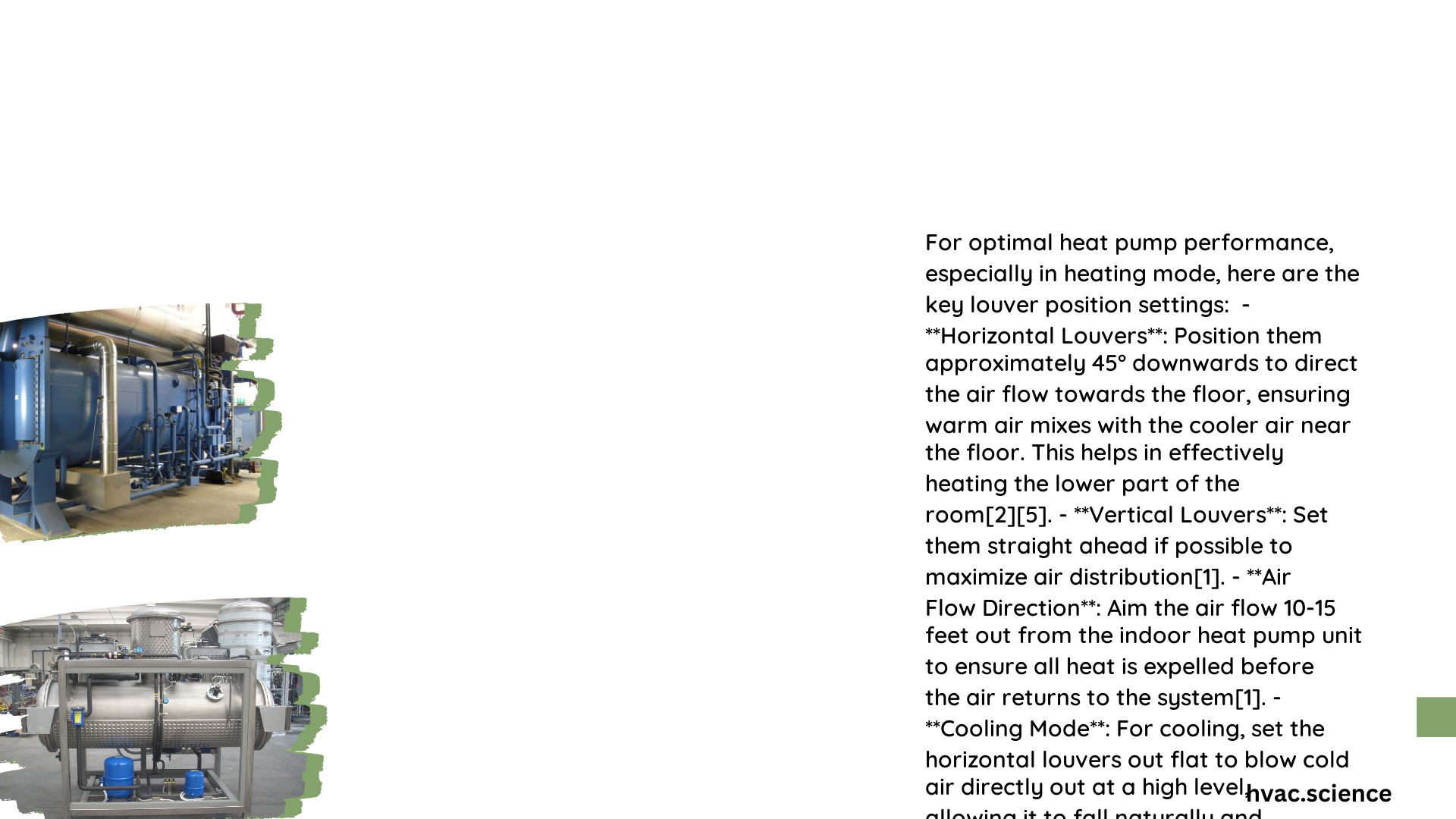Heat pump louver positioning is a critical yet often overlooked aspect of maintaining optimal indoor climate control. By strategically adjusting louver angles and directions, homeowners can significantly enhance system performance, reduce energy consumption, and create more comfortable living environments. Understanding the nuanced relationship between louver positioning and heat transfer efficiency can lead to substantial improvements in overall heat pump functionality.
What Are Heat Pump Louvers?
Heat pump louvers are adjustable panels that control the direction and distribution of heated or cooled air from indoor units. These mechanical components play a crucial role in directing airflow, ensuring even temperature distribution, and maximizing system efficiency.
Why Does Heat Pump Louver Position Matter?

Impact on Energy Efficiency
- Proper louver positioning can reduce energy consumption by 5-10%
- Minimizes unnecessary heat loss
- Optimizes air circulation patterns
Comfort Considerations
- Prevents direct cold or hot air streams
- Ensures uniform room temperature
- Reduces potential draft discomfort
How to Determine Optimal Louver Angles?
Winter Positioning Strategy
| Angle | Performance | Recommendation |
|---|---|---|
| 15° | Low Efficiency | Not Recommended |
| 27° | Balanced Performance | Optimal |
| 45° | Good Distribution | Suitable for Large Spaces |
Key Positioning Principles
- Horizontal Louvers: Angle downward at approximately 45°
- Vertical Louvers: Maintain straight-ahead orientation
- Avoid direct airflow towards occupants
- Consider room layout and furniture placement
What Factors Influence Louver Positioning?
Room Characteristics
- Ceiling height
- Room dimensions
- Window placement
- Furniture arrangement
System-Specific Variables
- Heat pump model
- Indoor unit location
- Manufacturer recommendations
Best Practices for Heat Pump Louver Adjustment
Step-by-Step Positioning Guide
- Identify primary heat transfer zones
- Adjust horizontal louvers to 45° downward angle
- Set vertical louvers to neutral position
- Test and observe air distribution
- Make incremental adjustments
Common Mistakes to Avoid
- Blocking louver movement
- Ignoring manufacturer guidelines
- Neglecting regular maintenance
- Failing to clean louver mechanisms
Technical Considerations
Airflow Dynamics
- Louver angle affects pressure drop
- Influences heat exchanger performance
- Impacts overall system efficiency
Performance Metrics
- Heat transfer coefficient
- Pressure drop characteristics
- Thermal resistance
Maintenance and Optimization
Regular Inspection Checklist
- Check louver mechanism functionality
- Clean dust and debris
- Verify smooth movement
- Assess seal integrity
Professional Evaluation
- Annual HVAC system assessment
- Thermal imaging analysis
- Performance diagnostics
Conclusion
Mastering heat pump louver positioning requires understanding complex interactions between airflow, room dynamics, and system design. By implementing strategic positioning techniques, homeowners can achieve superior comfort, energy efficiency, and long-term system performance.
